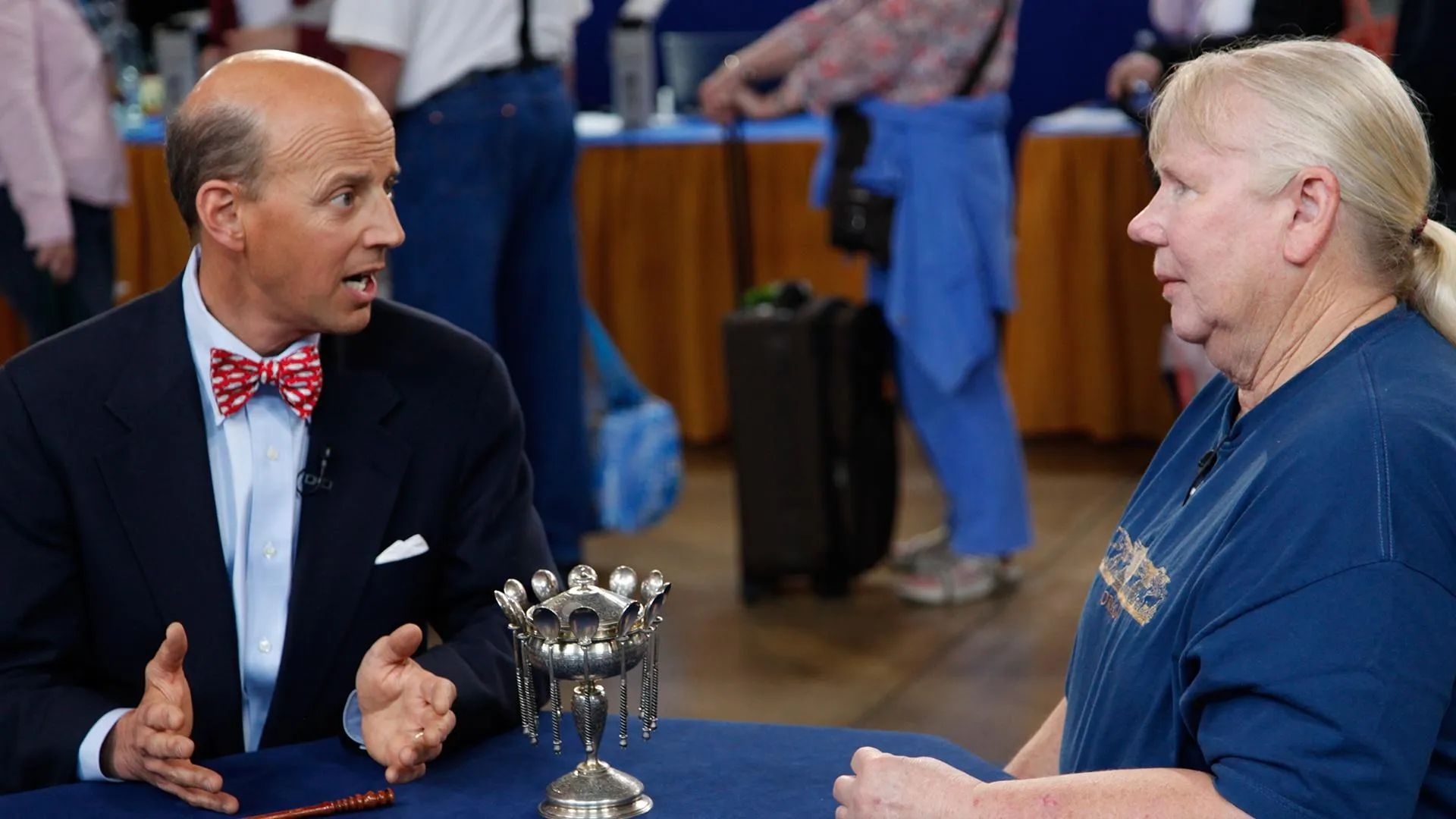GUEST: At the outbreak of World War Two, the French consulate in Boston was called back home, and they weren't allowed to take their furniture because it was wartime. So, places in Boston took these on consignment, their pieces of furniture, and my grandmother bought it there.
APPRAISER: Well, it's interesting that you say that the French consulate had this in their residence because the quality of this piece is superb. It is a vitrine by Paul Sormani, and we know that because the piece is signed, with the Sormani name, Paris, and the address that he worked as an ebonist. He opened his shop in Paris in 1867. Their family actually had it going into the 1930s. I want to show how it appears on the back side as well. Do you want to help me sort of move this around?
GUEST: Sure.
APPRAISER: If you take a peek at the back, you'll notice that there are these wonderful bronze panels around the whole piece, and that the back looks very similar to the front. So, not only is it a vitrine, but I would be more specific and call it a vitrine de milieu, which means that it can be viewed in the round. These pieces were made to house beautiful objects. And if you notice, the top has got a bronze gallery and then the bottom also has this bronze gallery, and all of these bronze panels have got these wonderful putti. The piece is in the style of Louis XVI. However, it is a 19th-century piece of furniture, made in probably about 1890. Paul Sormani copied a lot of the very important French makers from the 18th century. You’ll see him going Louis the XV and Louis the XV styles. This one, as Louis XVI, you'll see he's doing this very straight leg down with a little cap at the bottom in acanthus leaves. All of these style motifs are done to copy early Romanesque furniture and architectural details. Italianate.
GUEST: Were their methods the same as the old originals?
APPRAISER: Yes. And when you examine his ormolu mounting, you'll see that it's very well-defined, highly carved, and highly figured, which again is evocative of his great quality. Sormani used exotic veneers. I would say that this is kingwood and also some fruitwood veneers. You can see this great play, back and forth, of the light and the dark. One of the interesting things about these vitrines is that when you see them in the 18th century, actual ones, it's very rare to see them with these four glass sides because the glass was much more difficult to make at that time period. They're often solid wood, and you had to open the cabinet to see the objects inside. I would say that as an auction estimate, we probably would estimate it in the range of, say, $12,000 to $18,000.
GUEST: Wow.
APPRAISER: If you are intending to keep it in your home, you might want to think of an insurance value, say, in the $25,000 range.
GUEST: I think we should.
APPRAISER: Yeah.








